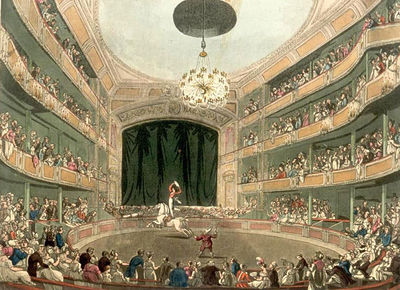Difference between revisions of "Main Page"
From Circopedia
| Line 30: | Line 30: | ||
==New Videos== | ==New Videos== | ||
| + | * [[Lilly_Yokoi_Video_(1968)|Lilly Yokoi]], Bicycle Act (1968) | ||
* [[Shcherbak_and_Popov_Video_(2011)|Shcherbak & Popov]], Hand-to-Hand Balancing (2011) | * [[Shcherbak_and_Popov_Video_(2011)|Shcherbak & Popov]], Hand-to-Hand Balancing (2011) | ||
* [[Arata_Video_(1967)|The Aratas]], Tight-Wire Act (1967) | * [[Arata_Video_(1967)|The Aratas]], Tight-Wire Act (1967) | ||
* [[Rudi-Llata_Video_(1966)|Les Rudi-Llata]], Clowns (1966) | * [[Rudi-Llata_Video_(1966)|Les Rudi-Llata]], Clowns (1966) | ||
* [[Alyona_Pavlova_Video_(2014)|Alyona Pavlova]], Aerial Hoop (2014) | * [[Alyona_Pavlova_Video_(2014)|Alyona Pavlova]], Aerial Hoop (2014) | ||
| − | |||
==Featured Oral Histories== | ==Featured Oral Histories== | ||
Revision as of 21:31, 4 September 2015
|
In The Spotlight
A SHORT HISTORY OF THE CIRCUS
If the history of theater, ballet, opera, vaudeville and music-hall, movies, and television is generally well documented, serious studies of circus history are sparse, and known only to a few circus enthusiasts and scholars. What little the public at large knows, on the other hand, is circus history as told over the years by imaginative circus press agents, and repeated—and often misunderstood and distorted—by writers of popular fiction, Hollywood screenwriters, and journalists too busy to investigate further. One of the most popular misapprehensions about circus history is the oft-repeated idea that circus dates back to the Roman antiquity. But the Roman circus was in actuality the precursor of the modern racetrack; the only common denominator between Roman and modern circuses is the word itself, circus, which means in Latin as in English, "circle".The modern circus was actually created in England by Philip Astley (1742-1814), a former cavalry Sergeant-Major turned showman. The son of a cabinet-maker and veneer-cutter, Astley had served in the Seven Years' War (1756-63) as part of Colonel Elliott's 15th Light Dragons regiment, where he displayed a remarkable talent as a horse-breaker and trainer. Upon his discharge, Astley chose to imitate the trickAny specific exercise in a circus act.-riders who performed, with increasing success, all over Europe. Jacob Bates, an English equestrian based in the German States, who performed as far away as Russia (1764-65) and America (1772-73), was the first of these showmen to make a mark. Bates's emulators—Price, Johnson, Balp, Coningham, Faulkes, and "Old" Sampson—had become fixtures of London's pleasure gardens and provided Philip Astley with his inspiration. (more...)
New Biographies
- Foottit et Chocolat, Clowns
- Rose Gold, Aerialist
- Cirque Prin, History
- John Herriott, Animal Trainer
- The Anastasini Family, Acrobats, Animal Trainers
New Videos
- Lilly Yokoi, Bicycle Act (1968)
- Shcherbak & Popov, Hand-to-Hand Balancing (2011)
- The Aratas, Tight-Wire Act (1967)
- Les Rudi-Llata, Clowns (1966)
- Alyona Pavlova, Aerial Hoop (2014)
Featured Oral Histories
- Oleg Popov, Russian Television Feature (2014)
- Albert Fratellini, French Television Interview (1957)
- Nikolai Pavlenko, tiger trainer - Interview (RIA Novosti, 2012)
- Alberto Zoppé, Equestrian - Interview (McCutcheon & Distasio, 2003)
- Olivier Taquin, Mime - Interview (Jando, 2008)
A Message from the Editor
CIRCOPEDIA is a constantly evolving and expanding encyclopedia of the international circus. New videos, biographies, essays, and documents are added to the site on a weekly—and sometimes daily—basis. So keep visiting us: even if today you don't find what you're looking for, it may well be here tomorrow! And if you are a serious circus scholar and spot a factual or historical inaccuracy, do not hesitate to contact us: we will definitely consider your remarks and suggestions.
- Dominique Jando
- Editor/Curator
